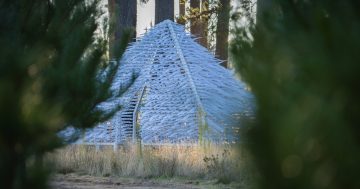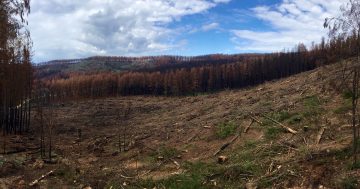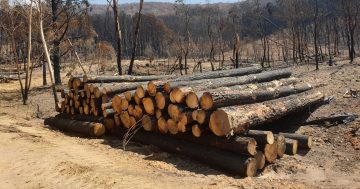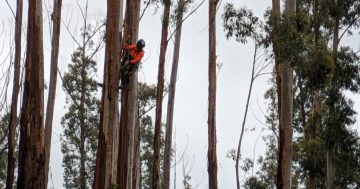
Around 40 million radiata pine seedlings cultivated and grown at Blowering Nursery have been planted near Tumut in the Snowy Valleys in the three years since devastating bushfires razed the region. Image: Forestry Corporation.
Almost three years on from the state’s worst bushfire emergency, the recovery efforts in state-owned softwood plantations, including those near Tumbarumba and Tumut, are now bursting with promise.
Forests in the state’s south were among the hardest hit areas by the 2019/2020 Black Summer bushfires which destroyed more than 5.5 million hectares across NSW, including a third of the state’s forest plantations.
But a groundbreaking replanting program has seen more than 40 million seedlings planted in the fire-impacted NSW pine forests – with well over half of that in the Snowy Valleys.
NSW is the largest producer of radiata pine in Australia, with Forestry Corporation responsible for managing around 240,000 hectares of plantations which produce more than 3.5 million tonnes of timber each year.
This is enough to construct about a quarter of the houses built in Australia each year.
Close to half of Forestry Corporation’s softwood plantations – around 100,000 hectares – are centred around Tumut and surrounding towns.
Thirty-six per cent of the plantations in the area surrounding Tumut were impacted by fires.
Forestry Corporation silviculture manager Roger Davies, said more than 24 million pine seedlings had since been replanted, which restored around three quarters of the fire-affected forests in that area alone.
The accelerated planting program, which also takes in state forests near Bombala, Bathurst, Walcha and Grafton, followed record-breaking post-fire salvage efforts which saw the removal of fire-affected trees and efforts to recover as much useable timber for the community as possible.
The trees are grown from seed and raised at Forestry Corporation’s nurseries at Tumut and Grafton before being distributed around the state for replanting programs.
Planting is done mostly by hand with a skilled tree planter able to plant about 2000 seedlings in a day.
In the state’s north at Grafton more than four million pine trees have been replanted across 4000 hectares of the pine forests impacted by bushfires.
The radiata pine seedlings planted this winter will be available to harvest for fibre extraction in 15 years and for structural timber in 28 years.
“The pine seedlings planted this winter will, in two to three decades’ time, become the housing timber supply for future generations here in NSW,” Mr Davis said.
















